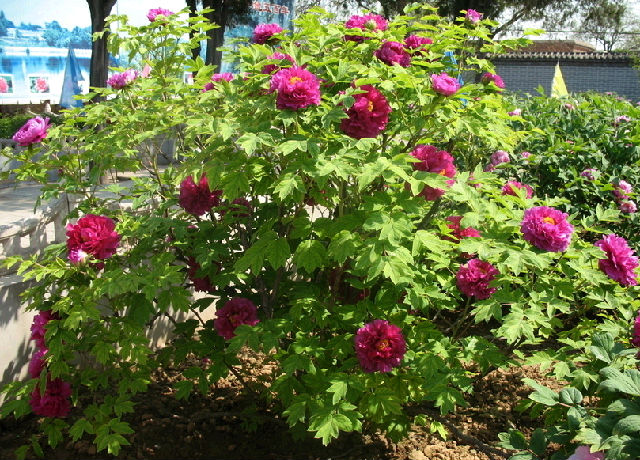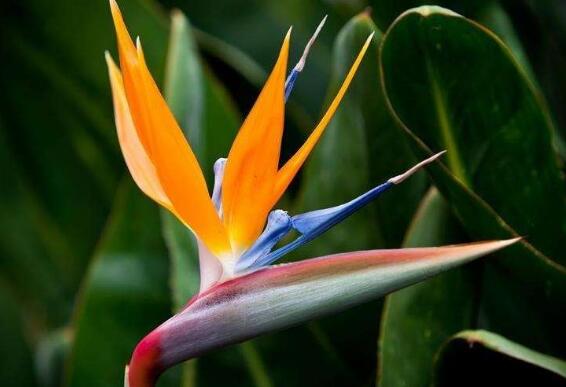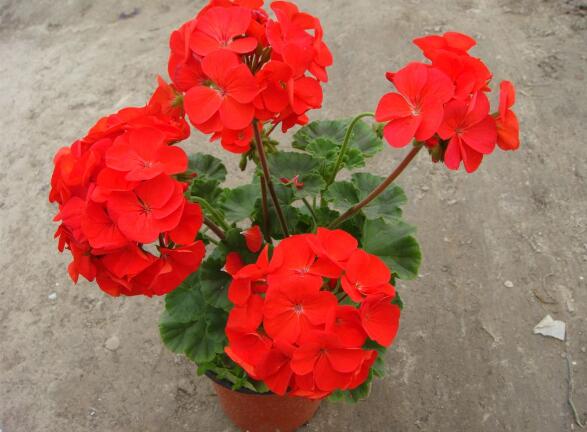How to control the white silk disease of peony flower
The white silk disease of peony mainly occurs at the base of the stem near the ground. Years of studies have shown that planting soil and fertilizer are the main sources of infection of the disease. Peony is more susceptible to disease before and after flowering and in hot and rainy seasons. At the time of onset, the aboveground part had no obvious symptoms, and then with the increase of temperature and humidity, the hyphae spread from the rhizome to the soil surface, densely distributed around the rhizome, and finally formed a brown millet-like sclerotia. The top of the diseased plant withered, the leaves withered and drooped, and finally the whole plant died.

Control methods: 1, we should pay attention to rotation with gramineous crops, do not rotate with rhizome medicinal materials and sweet potato, peanut, broad bean and other crops, otherwise you will not discuss. 2. Pay attention to the selection of disease-free seedlings and disinfect the new seedlings. The disinfectant can be soaked in 50% thiophanate or 70% thiophanate methyl or carbendazim for 10-30 minutes. Now in the process of breeding, the new seedlings must be disinfected. 3. The cultivated soil should be treated innocuously. In order to prevent the disease at the seedling stage, 70% pentachloronitrobenzene powder can be used to treat the soil, 2.5 kg per mu and 50 kg of dry fine soil, mix evenly, sprinkle it in the sowing or cutting ditch, and then sow or cut. After planting, new high-fat membrane can be sprayed to isolate diseases and insect pests. 4. When diseased plants are found, they should be dug up and burned in time, and they must not be reluctant to give up, and the diseased points should also be disinfected with lime. 5. In the early stage of the disease, 2.5 kilograms of 70% pentachloronitrobenzene powder can be sprinkled per mu, and the soil can be loosened after application, so that the powder can be evenly mixed into the soil. 50% carbendazim wettable powder 500 times solution or 1% copper sulfate solution can also be used to irrigate seedling roots. This should be the most direct and practical method of prevention and treatment. How to prevent and cure the white silk disease of peony
Peony white silk disease mainly occurs at the base of the stem near the ground. Soil and fertilizer are the sources of infection of the disease, especially when sweet potato and soybean are used as previous crops. The disease is easy to occur before and after flowering and in the hot and rainy season. In the initial stage, the aboveground part had no obvious symptoms, and with the increase of temperature and humidity, the hyphae spread from the rhizome to the soil surface, which was densely distributed around the rhizome, and finally formed a brown millet-like sclerotia. The top of the diseased plant withered, the leaves withered and drooped, and finally the whole plant died.
Prevention and control methods:
1. Rotation with gramineous crops is not suitable for rotation with rhizome medicinal materials, sweet potatoes, peanuts, broad beans and other crops.
2. Select the disease-free seedlings and disinfect the healthy seedlings. The disinfectant can be soaked in 50% methamphetamine or 70% methyl topiramate or carbendazim 800-1000 times for 10-30 minutes.
3. In order to prevent the disease at the seedling stage, 70% pentachloronitrobenzene powder can treat the soil with 2.5 kg per mu and 50 kg of dry fine soil, mix evenly, sprinkle it in the sowing or cutting ditch, and then sow or cut. After planting, the new high-fat membrane was sprayed to isolate diseases and insect pests and protect the healthy growth of plants.
4. The diseased plants were dug up and burned in time, and the diseased holes were disinfected with lime.
5. In the early stage of the disease, sprinkle 2.5 kg of 70% pentachloronitrobenzene powder per mu in the nursery and loosen the soil after application, so that the powder can be evenly mixed into the soil; the seedling root can also be irrigated with 500 times of 50% carbendazim wettable powder or 1% copper sulfate solution.
How to prevent and cure the white silk disease of peony
Peony white silk disease mainly occurs at the stem base of seedlings near the ground. Soil and fertilizer are the sources of infection of the disease, especially when sweet potatoes and soybeans are used as previous crops. The disease is easy to occur before and after flowering and in the hot and rainy season. In the initial stage, the aboveground part had no obvious symptoms, and with the increase of temperature and humidity, the hyphae spread from the rhizome to the soil surface, which was densely distributed around the rhizome, and finally formed a brown millet-like sclerotia. The top of the diseased plant withered, the leaves withered and drooped, and finally the whole plant died.
Prevention and control methods:
1. Rotation with Gramineae crops is not suitable for rotation with rhizome medicinal materials, sweet potatoes, peanuts, broad beans and other crops.
2. Select the disease-free seedlings and disinfect the healthy seedlings. The disinfectant can be soaked in 50% methamphetamine or 70% methyl topiramate or carbendazim 800 times solution for 10-30 minutes.
3. In order to prevent the disease at the seedling stage, 70% pentachloronitrobenzene powder can be used to treat the soil, 2.5 kg per mu and 50 kg of dry fine soil, mix evenly, sprinkle it in the sowing or cutting ditch, and then sow or cut. After planting, the new high-fat membrane was sprayed to isolate diseases and insect pests and protect the healthy growth of plants.
4. The diseased plants were dug up and burned in time, and the diseased holes were disinfected with lime.
5. In the early stage of the disease, 2.5 kg of 70% pentachloronitrobenzene powder was applied in the nursery. After application, the soil was loosened and the powder was evenly mixed into the soil. The seedling root can also be irrigated with 50% carbendazim wettable powder 500 times or 1% copper sulfate solution.
- Prev

The orchid doesn't blossom when raised indoors, why doesn't it blossom / lack of light?
As people pay more and more attention to their health, raising plants indoors has become a choice for many people, and the beauty of orchids is fascinating, so many people plant them indoors. Then, many flower friends will encounter a problem, that is, the orchid does not bloom indoors, so why does the orchid not blossom? To this
- Next

How to raise geraniums, breeding methods and precautions / sufficient light for geraniums
Geranium is a kind of plant that is very common all over the world, and it is a common decorative flower. About how to raise geraniums, which has a lot to do with sunshine, watering, environment and other aspects, so what are the specific breeding methods and matters needing attention of geraniums? let's take a look at them.
Related
- Fuxing push coffee new agricultural production and marketing class: lack of small-scale processing plants
- Jujube rice field leisure farm deep ploughing Yilan for five years to create a space for organic food and play
- Nongyu Farm-A trial of organic papaya for brave women with advanced technology
- Four points for attention in the prevention and control of diseases and insect pests of edible fungi
- How to add nutrient solution to Edible Fungi
- Is there any good way to control edible fungus mites?
- Open Inoculation Technology of Edible Fungi
- Is there any clever way to use fertilizer for edible fungus in winter?
- What agents are used to kill the pathogens of edible fungi in the mushroom shed?
- Rapid drying of Edible Fungi

